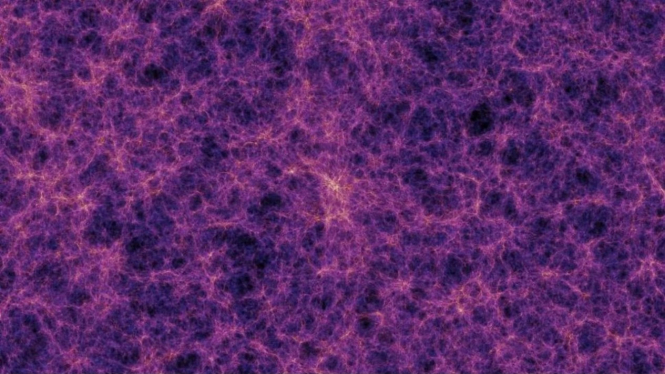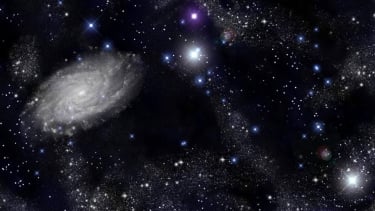- Institut Max Planck untuk Astrofisika
VIVA – Scientists have made one of the most precise maps of the universe's matter, and it shows that something may be missing in our best model of the cosmos.
Created by pooling data from two telescopes that observe different types of light, the new map revealed that the universe is less "clumpy" than previous models predicted a potential sign that the vast cosmic web that connects galaxies is less understood than scientists thought.
According to our current understanding, the cosmic web is a gigantic network of crisscrossing celestial superhighways paved with hydrogen gas and dark matter.
Taking shape in the chaotic aftermath of the Big Bang, the web's tendrils formed as clumps from the roiling broth of the young universe; where multiple strands of the web intersected, galaxies eventually formed.
This new map published on January 31 as three separate studies in the journal Physical Review D, shows that in many parts of the universe, the matter is less clumped together and more evenly spread out than theory predicts it should be, as launched from the Live Science site.
Alam semesta.
- Space.com
"It seems like there are slightly fewer fluctuations in the current universe than we would predict assuming our standard cosmological model anchored to the early universe," co-author Eric Baxter, an astrophysicist at the University of Hawaii, stated in a statement.
According to the standard model of cosmology, the universe began taking shape after the Big Bang, when the young cosmos swarmed with particles of both matter and antimatter, which popped into existence only to annihilate each other upon contact.
Most of the universe's building blocks wiped themselves out this way, but the rapidly expanding fabric of space-time, along with some quantum fluctuations, meant that some pockets of the primordial plasma survived here and there.
The force of gravity soon compressed these plasma pockets in on themselves, heating the matter as it was squeezed closer together to such an extent that sound waves traveling at half the speed of light (called baryon acoustic oscillations) rippled outward from the plasma clumps.
These ripples pushed away the matter that hadn't already been drawn into the center of a clump, where it came to rest as a halo around it. At that point, most of the universe's matter was distributed as a series of thin films surrounding countless cosmic voids, like a nest of soap bubbles in a sink.
Once this matter, primarily hydrogen and helium, had sufficiently cooled, it clotted further to birth the first stars, which, in turn, forged heavier and heavier elements through nuclear fusion.
To map how the cosmic web spins, the researchers combined observations taken with the Dark Energy Survey in Chile and the South Pole Telescope, which is located in Antarctica, and studies the microwave emissions that form the cosmic microwave background.
Although they looked at different wavelengths of light, both telescopes used a technique called gravitational lensing to map the clumping of matter.
Gravitational lensing is an excellent tool for tracking normal matter and mysterious dark matter. Although 85 percent of the Universe does not interact with light, except to distort it with gravity.
With this approach, the researchers used data from both telescopes to determine the location of the matter and removed errors from one telescope's data set, comparing it to the other.
The map of cosmic matter that the researchers produced closely matches our understanding of how the universe evolved, except for the difference that it is more evenly distributed and less clumpy than suggested by the standard model of cosmology.
There are two possibilities to explain this discrepancy. The first is that we are not looking at the universe very precisely and the apparent deviation from the model, will disappear as we get better tools to peer into the cosmos.
The second and more significant possibility is that our cosmological model is missing some seriously big physics. Figuring out which is right will require more surveys and cross-mapping, as well as a deeper understanding of the cosmological constraints that bind the universe.

























